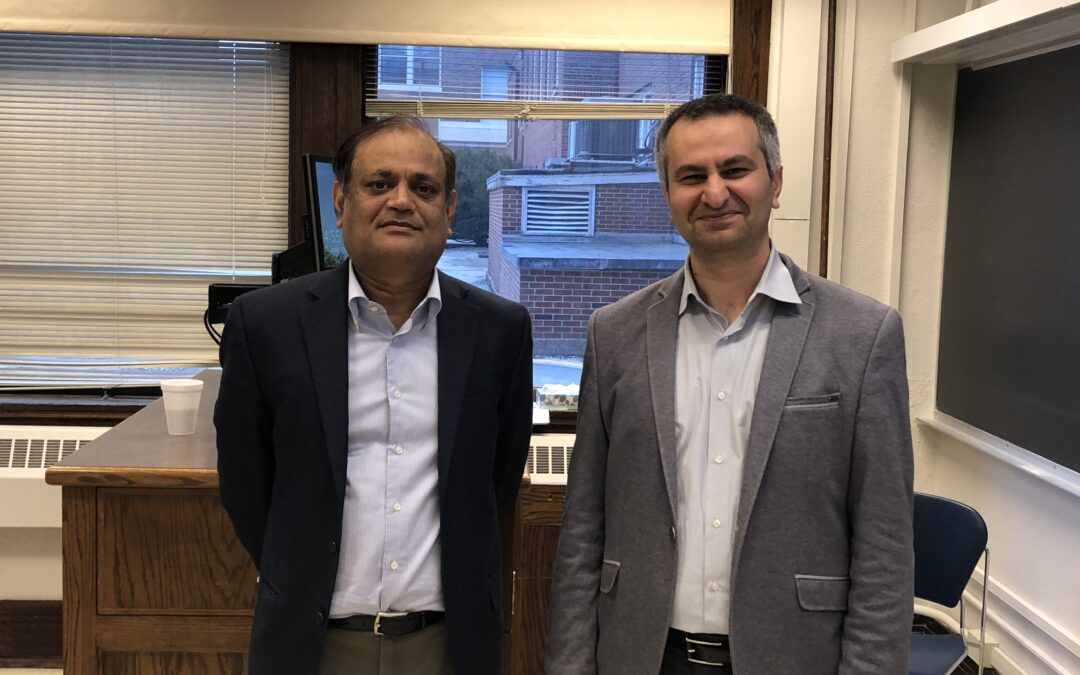Image of Dr. Oguzhan Alagoz and Dr. Kesh Kesavadas.
The Tissue Microenvironment class was privileged to spend an hour and a half talking with Dr. Oguzhan Alagoz from the University of Wisconsin-Madison. Dr. Alagoz came in from Wisconsin to speak to the ISE Graduate Seminar students, but graciously took time out to speak to the TiMe students about his experience in data informatics. Dr. Alagoz discussed his work on developing a mammography screening schedule for different populations based on prior screening history and personal risk characteristics of women. Although data analysis and tissue engineering seem far removed, students were able to ask about the specific markers the screening looked at as well as how engineering and the hospital setting can be intertwined.
Dr. Kesh Kesavadas has the privilege of introducing Dr. Alagoz to the ISE Graduate Seminar students, and the abstract of his talk is below.
ABSTRACT
Breast cancer is the most common non-skin cancer and the second leading cause of cancer-death in US women. Although mammography is the most effective modality for breast cancer diagnosis, it has several potential risks, including high false positive rates, which are not very rare. Therefore, the balance of benefits and risks, which depend on personal characteristics, is critical in designing a mammography screening schedule. In contrast to prior research and existing guidelines which consider population-based screening recommendations, we propose a personalized mammography screening policy based on the prior screening history and personal risk characteristics of women. We formulate a finite-horizon partially observable Markov decision process (POMDP) model for this problem. Our POMDP model incorporates two methods of detection (self or screen), age-specific unobservable disease progression, and age-specific mammography test characteristics. We use a validated micro-simulation model based on real data in estimating the parameters and solve this POMDP model optimally for individual patients. Our results show that our proposed personalized screening schedules outperform the existing guidelines with respect to the total expected quality-adjusted life years, while significantly decreasing the number of mammograms. We further find that the mammography screening threshold risk increases with age. We derive several structural properties of the model, including the sufficiency conditions that ensure the existence of a control-limit policy.
BIOGRAPHY
Dr. Oguzhan Alagoz is a Professor of Industrial and Systems Engineering at the University of Wisconsin-Madison. He is also a professor at the Department of Population Health Sciences and serves as the director of NIH-funded Institute for Clinical and Translational Research (ICTR)-Simulation Center as well as the associated director for Wisconsin Institute for Healthcare Systems Engineering (WIHSE).
– Written Paloma Pearson

